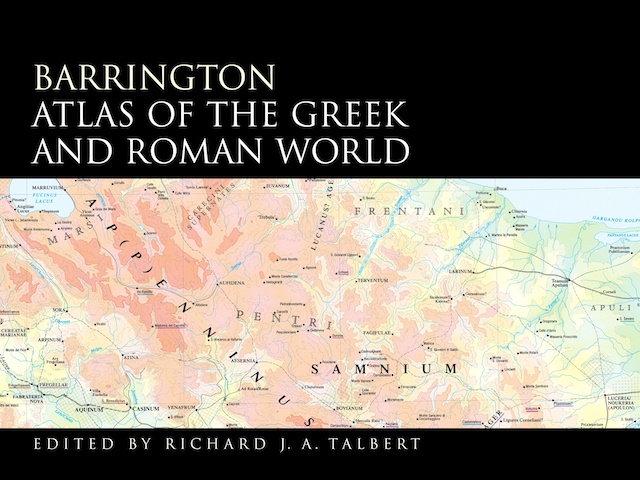At a list price of $395, the print version of the Barrington Atlas of the Greek and Roman World (Princeton University Press, 2000), was more expensive than some iPads. Which makes the forthcoming iPad version of the Atlas, described in the announcement as “complete content of the classic reference work,” a veritable bargain at only $20.
In 102 interactive color maps, this app re-creates the entire world of the Greeks and Romans from the British Isles to the Indian subcontinent and deep into North Africa. Unrivaled for range, clarity, and detail, these custom-designed maps return the modern landscape to its ancient appearance, marking ancient names and features in accordance with modern scholarship and archaeological discoveries. Geographically, the maps span the territory of more than seventy-five modern countries. Chronologically, they extend from archaic Greece to the Late Roman Empire.
It’ll be available on November 21: plenty of time for me to get a new iPad Air by then (it works on all iPads except the original).
Previously: Barrington Atlas.





 Anyway. During my online meanderings today I stumbled across two academic books about the Tabula that I was previously unaware of:
Anyway. During my online meanderings today I stumbled across two academic books about the Tabula that I was previously unaware of: 
